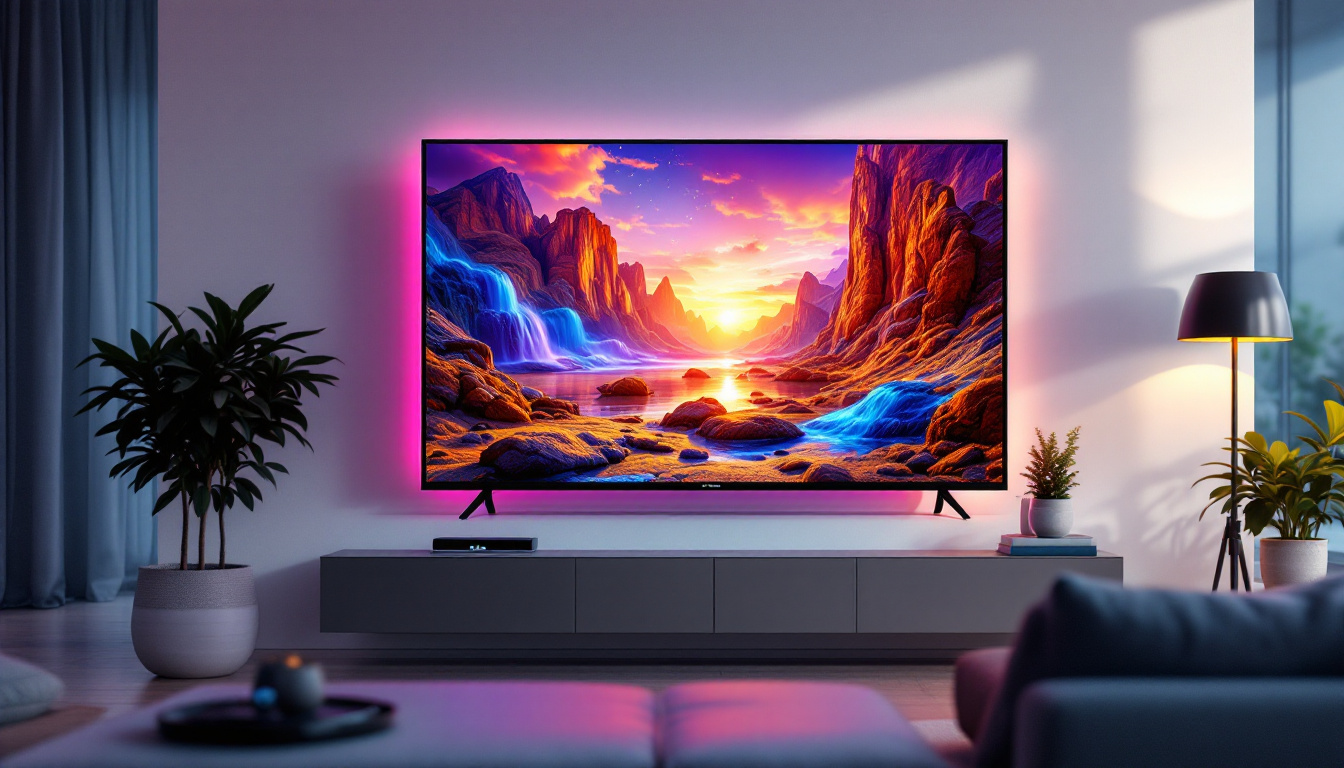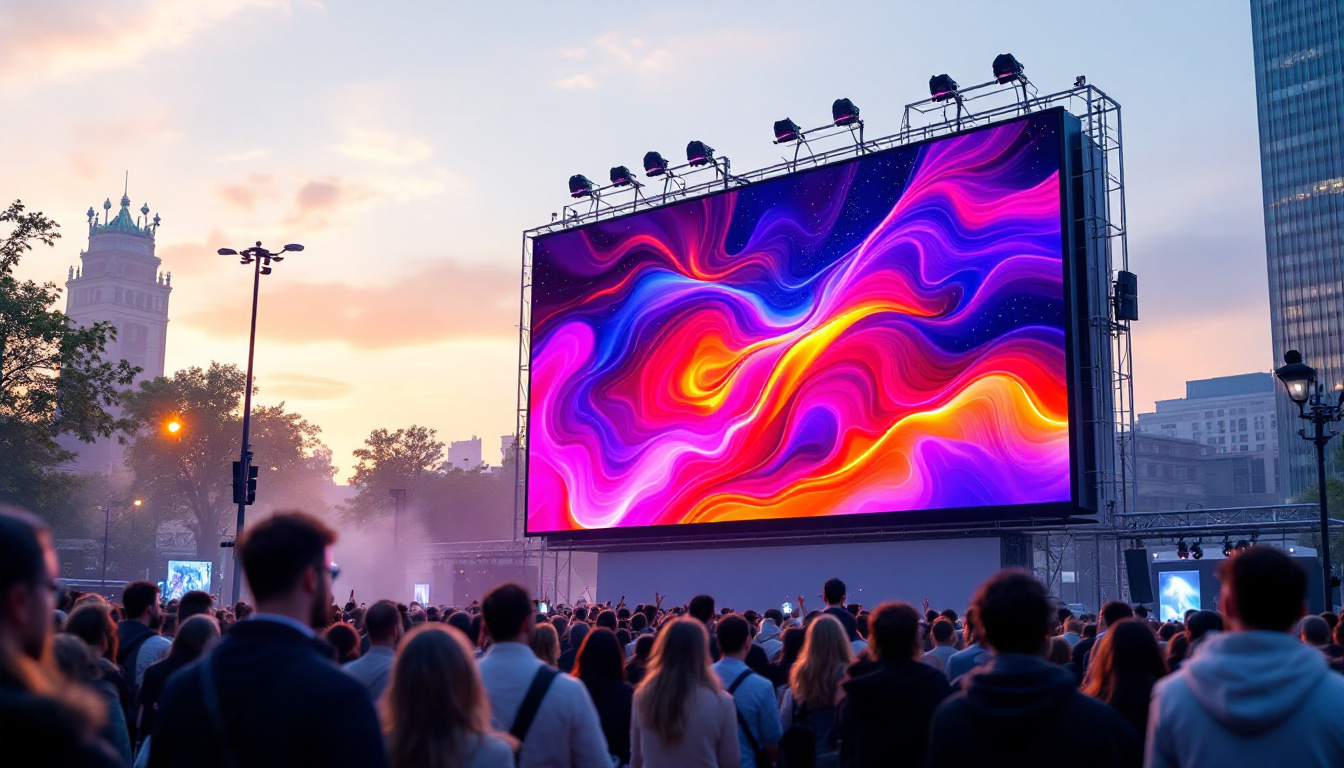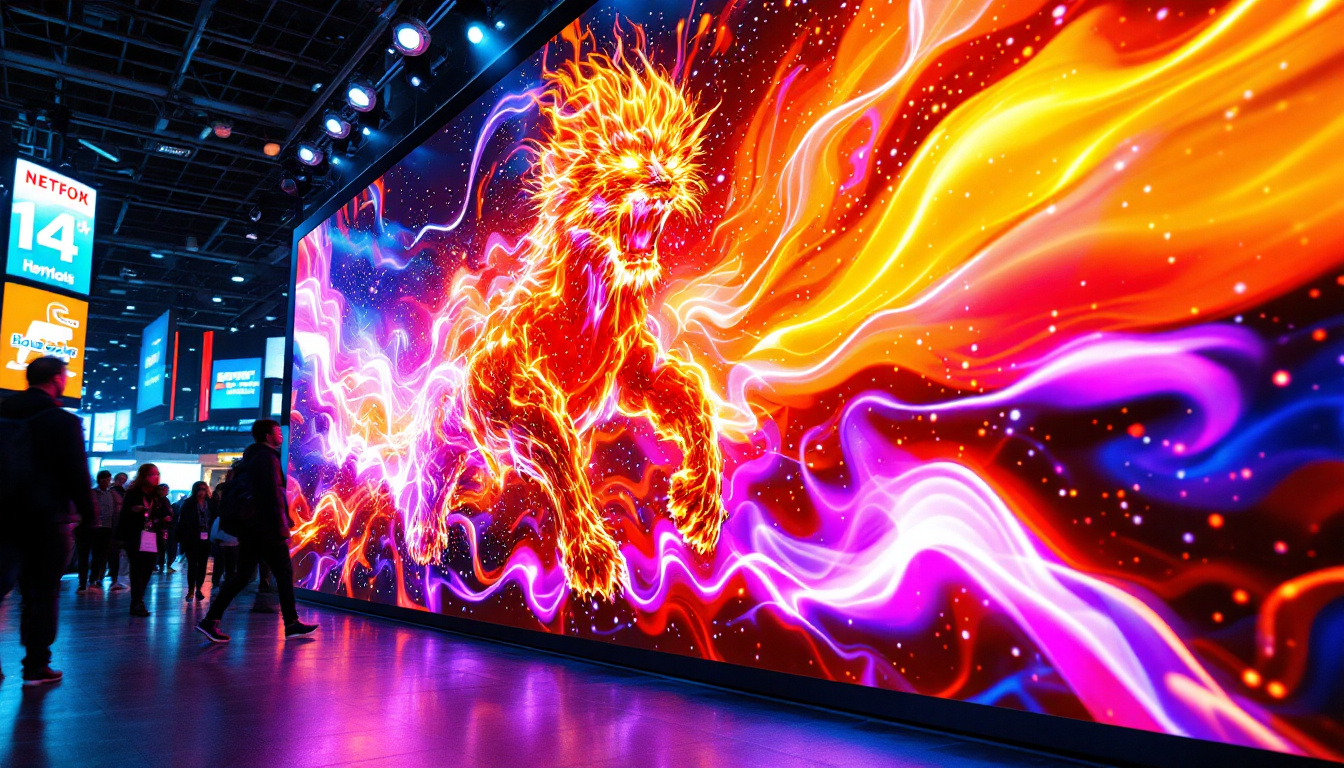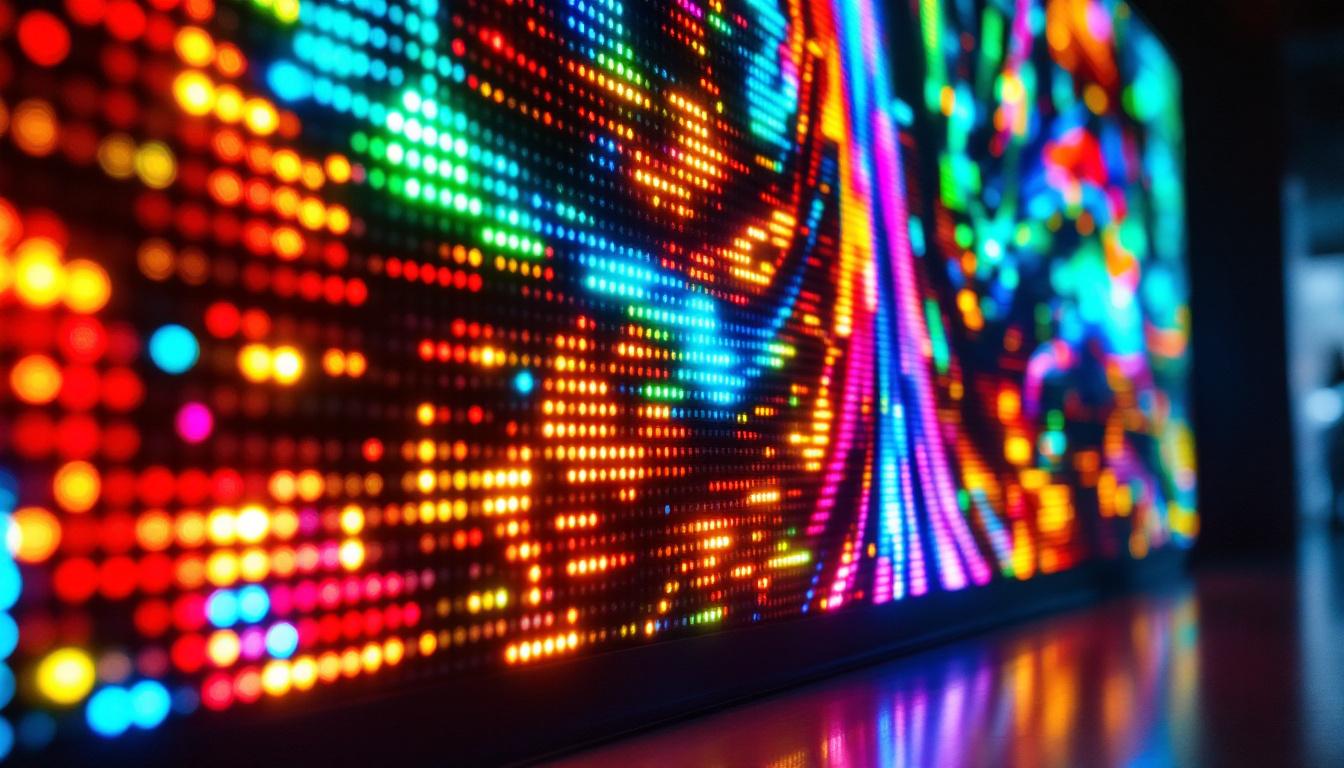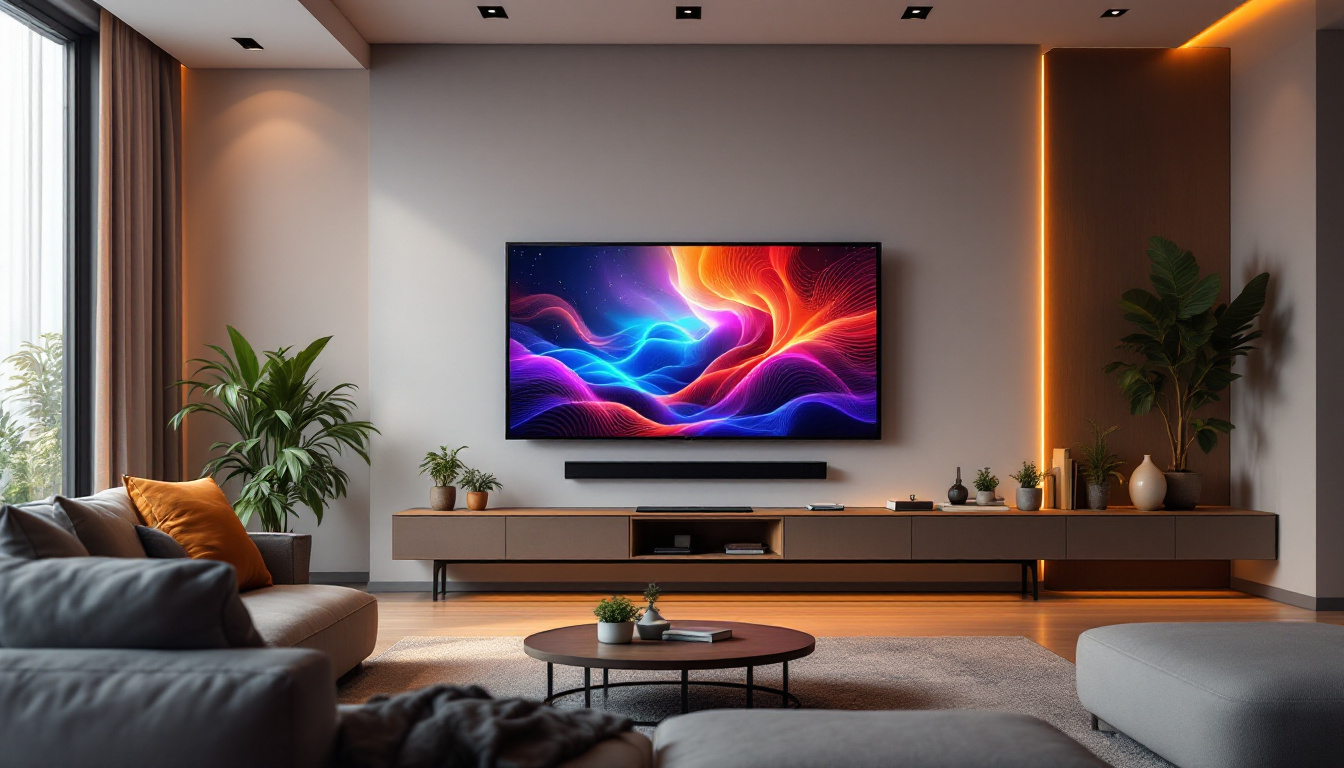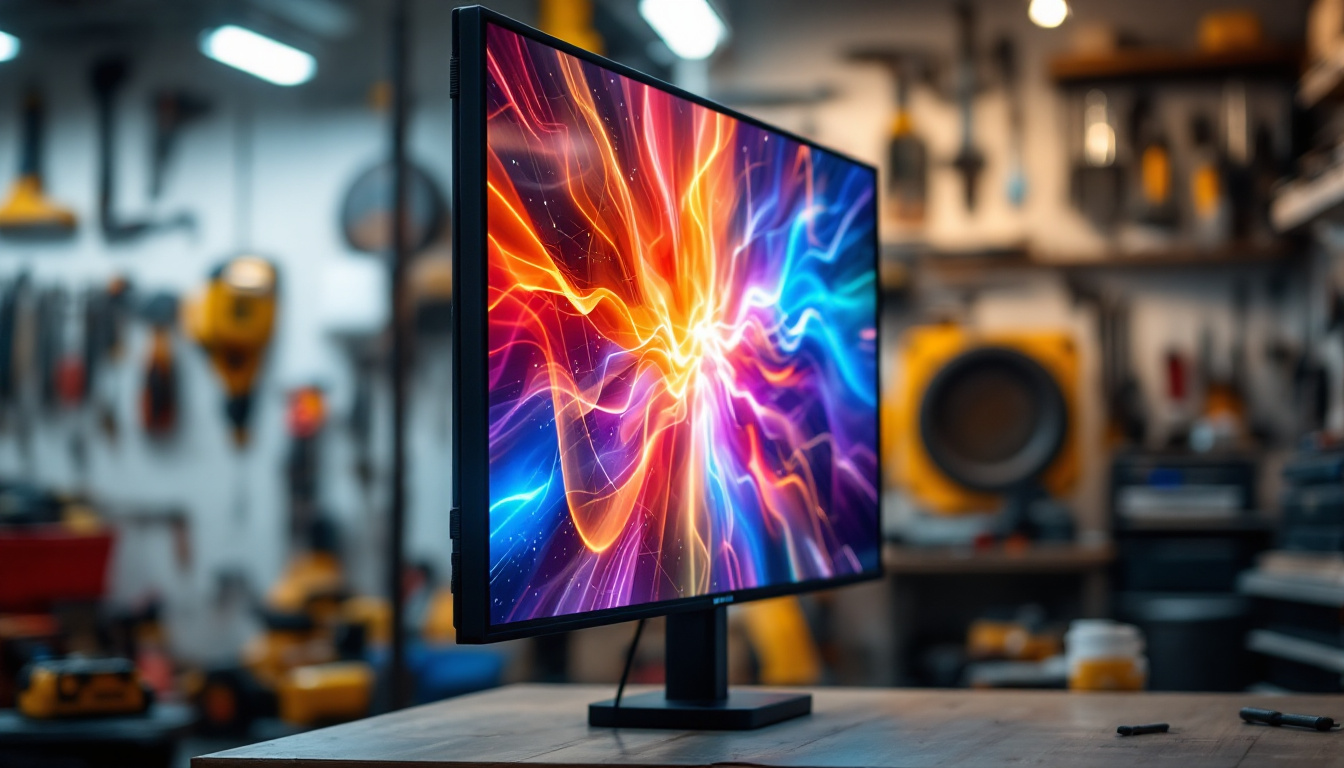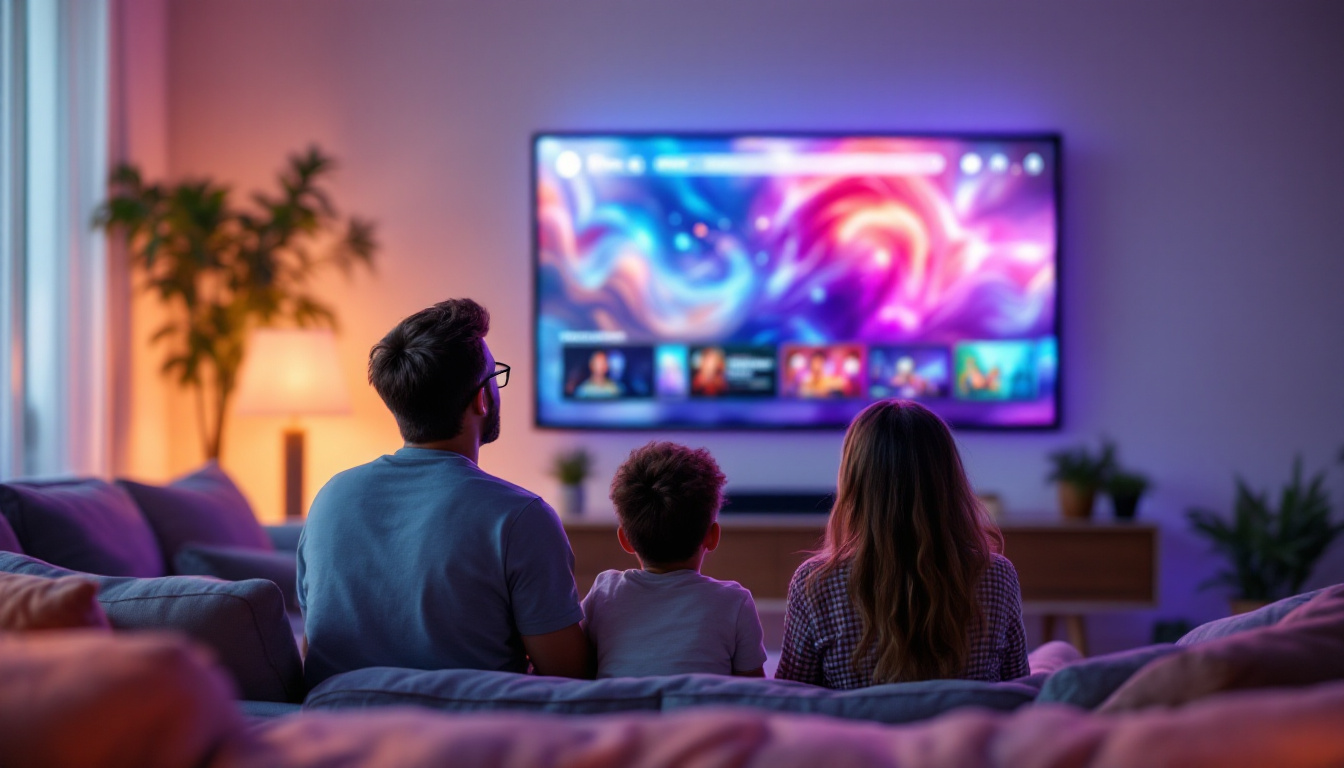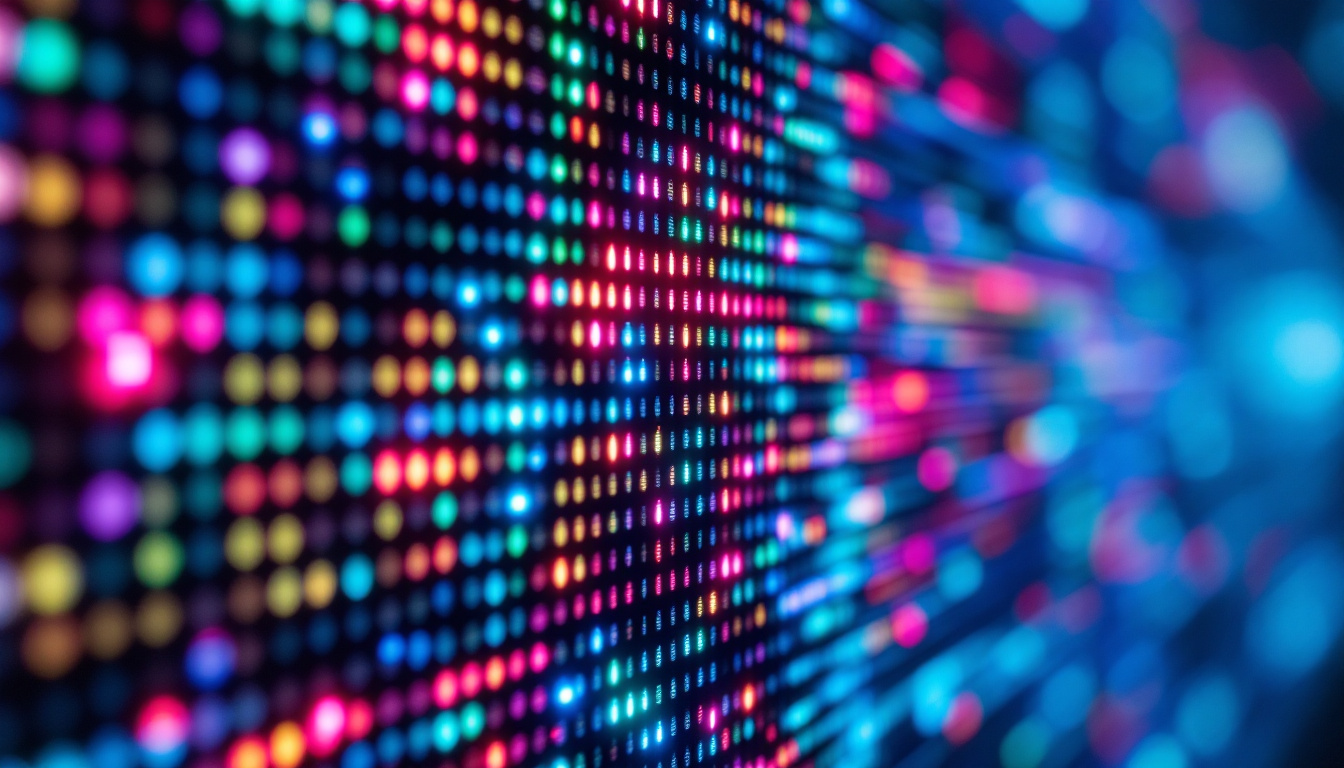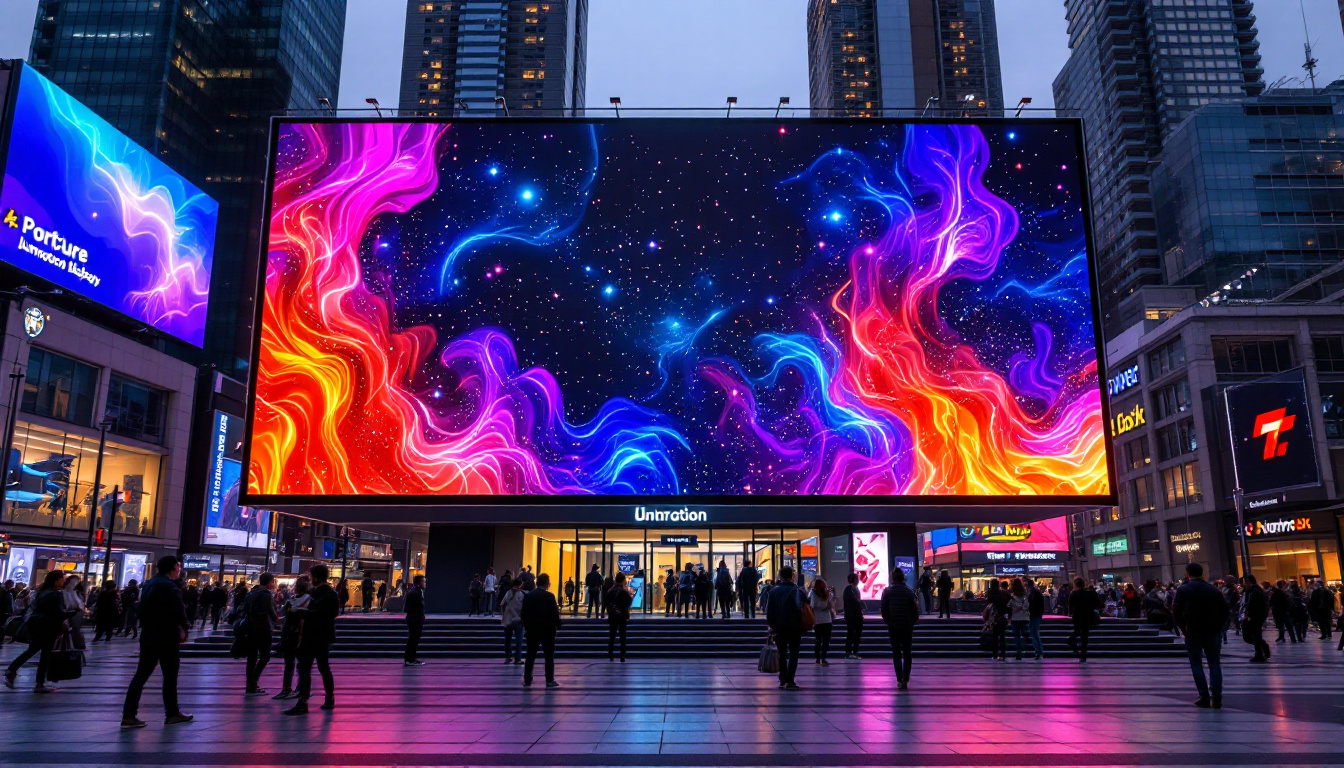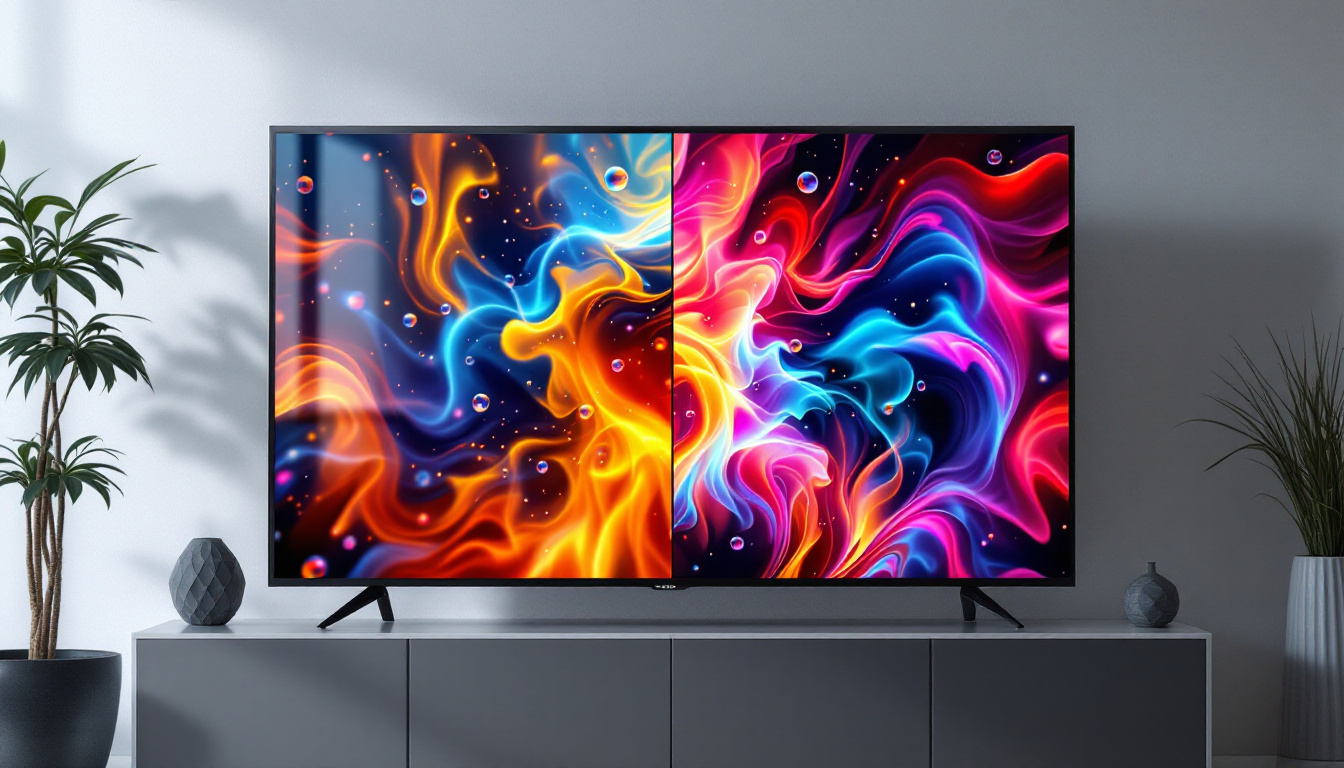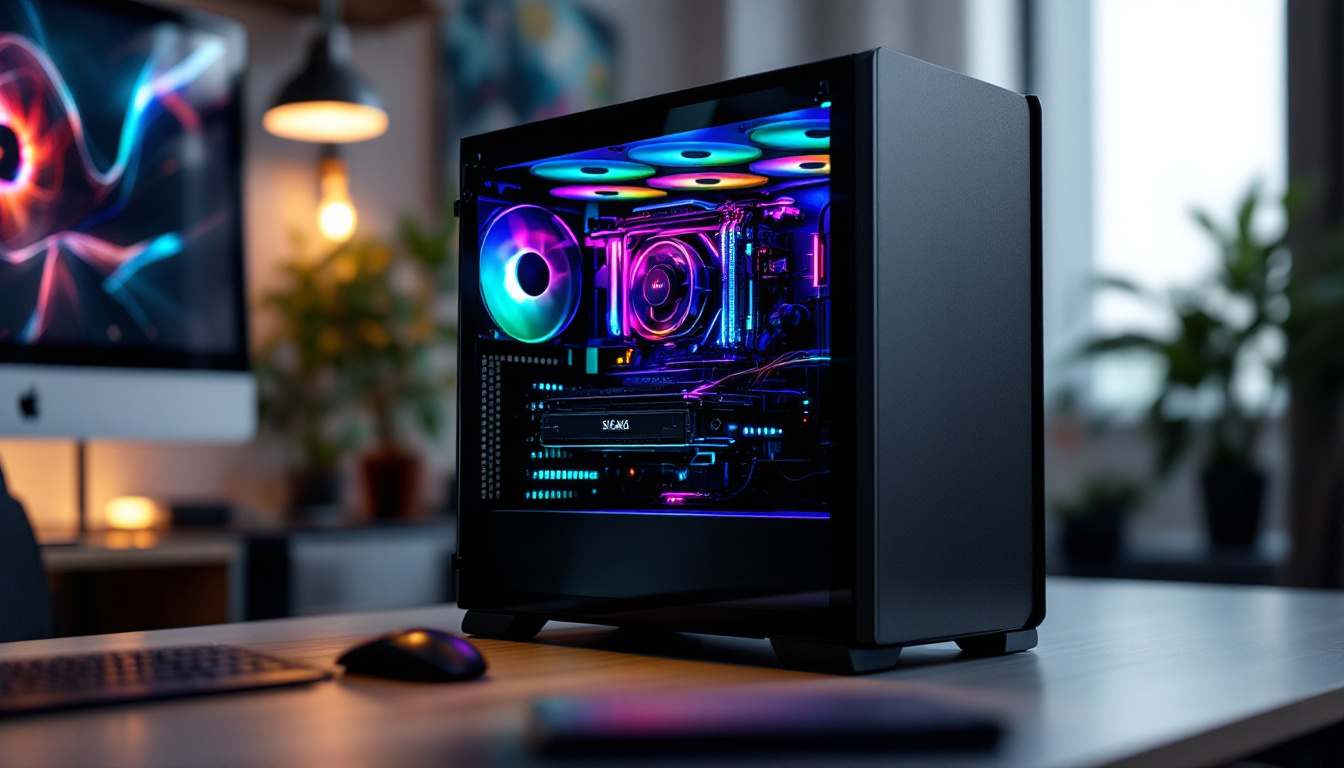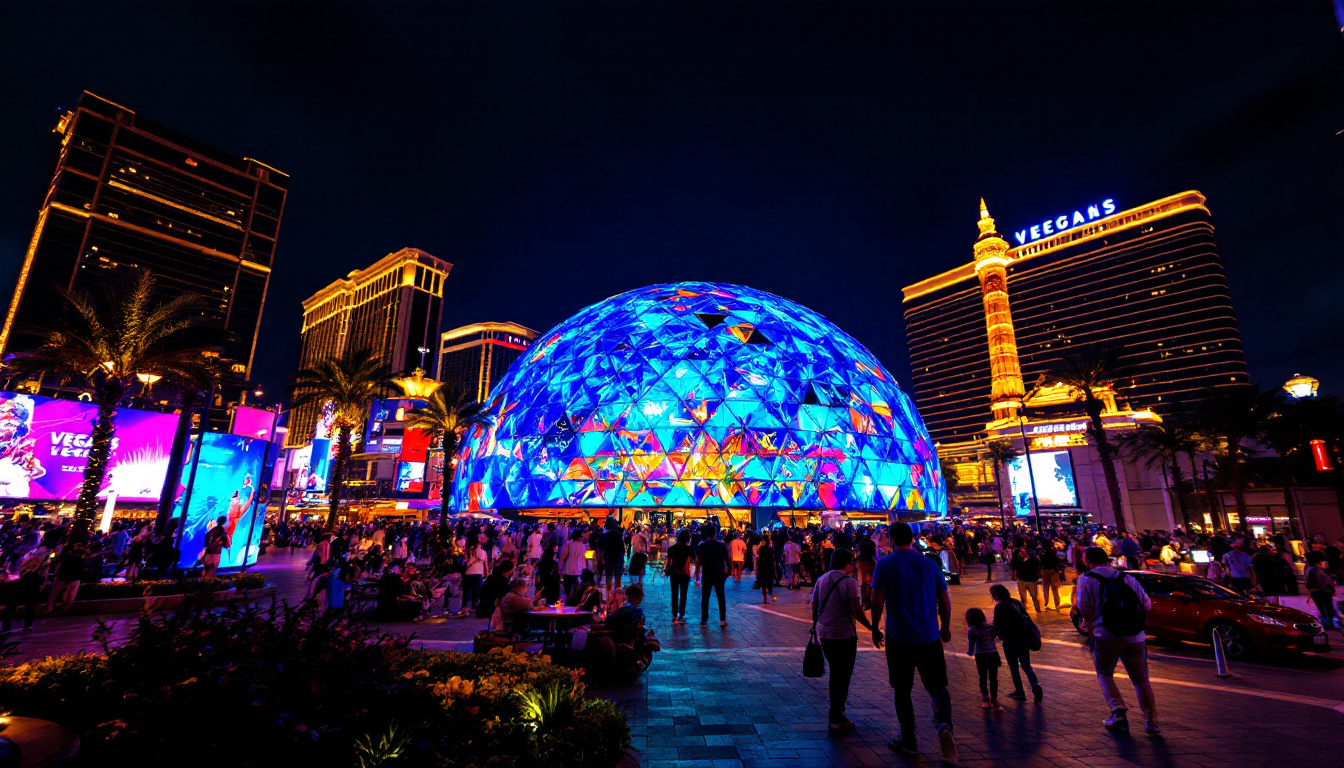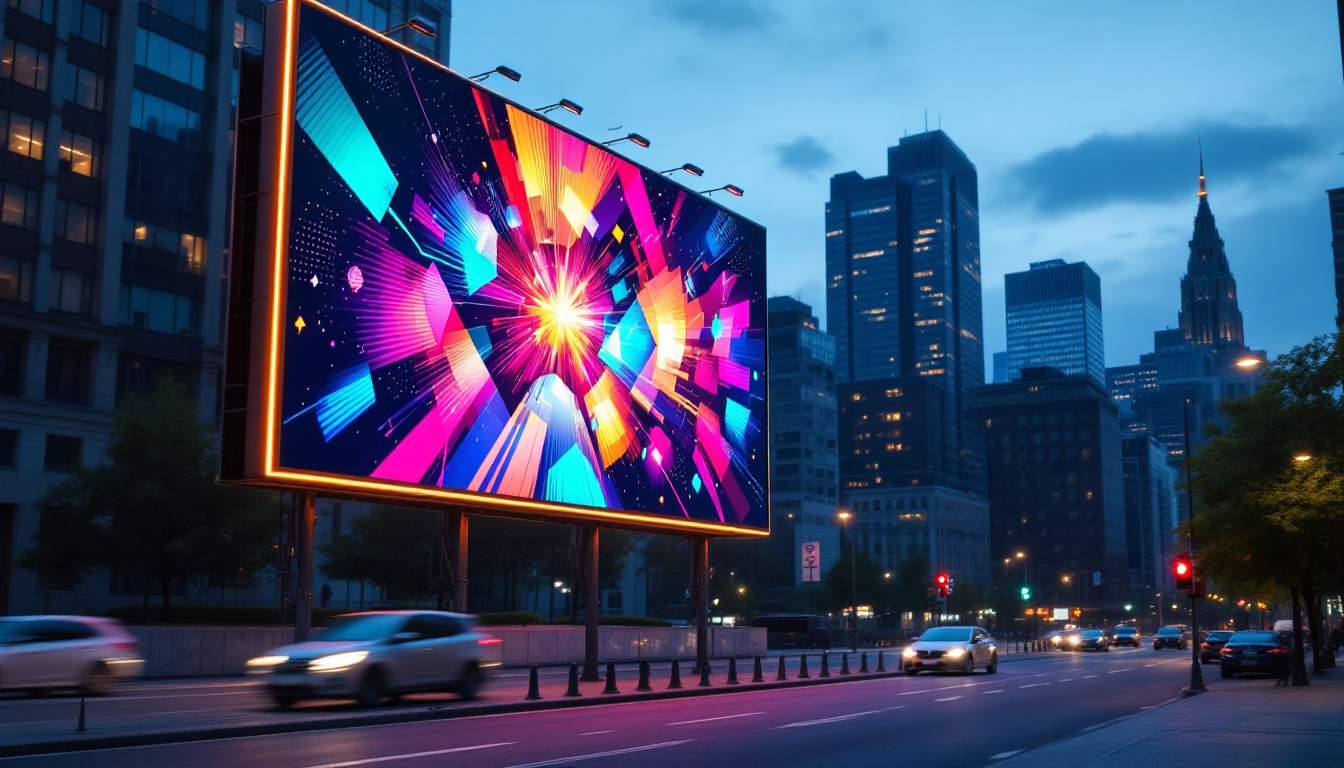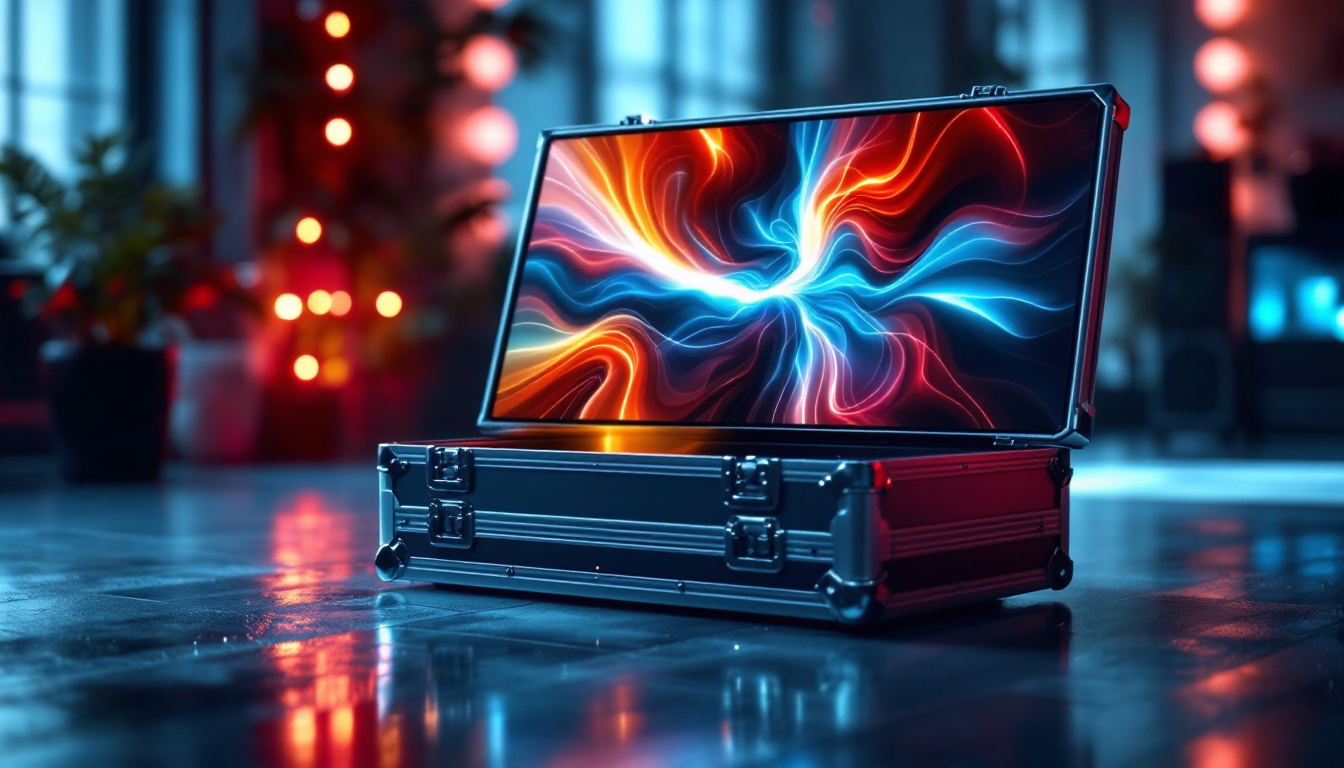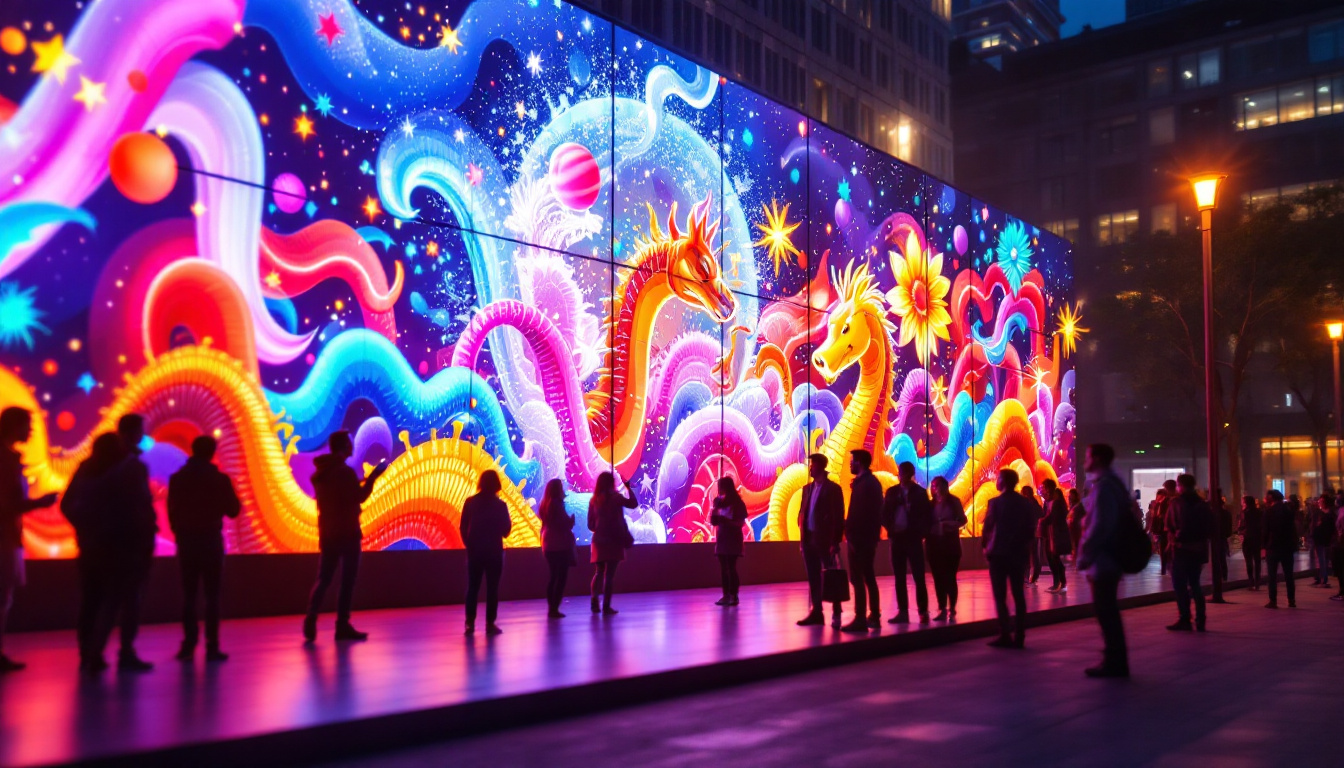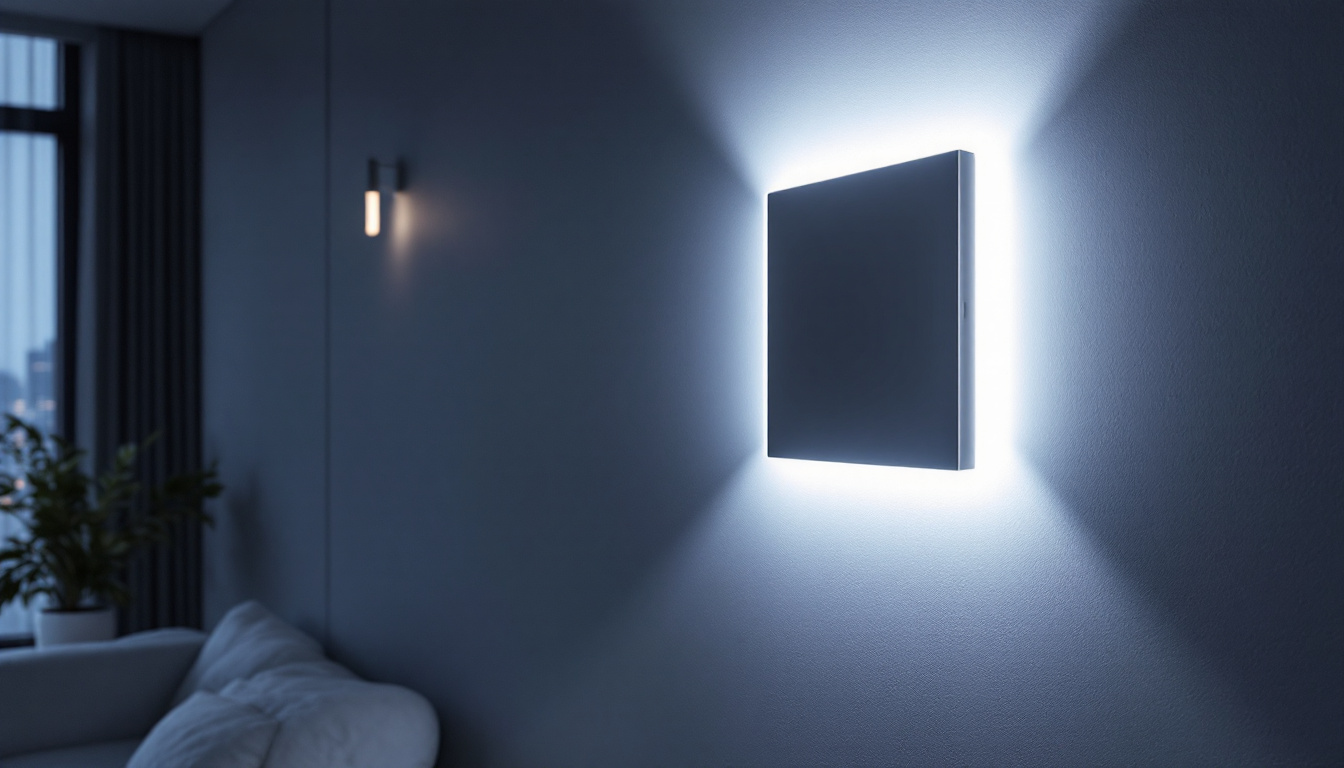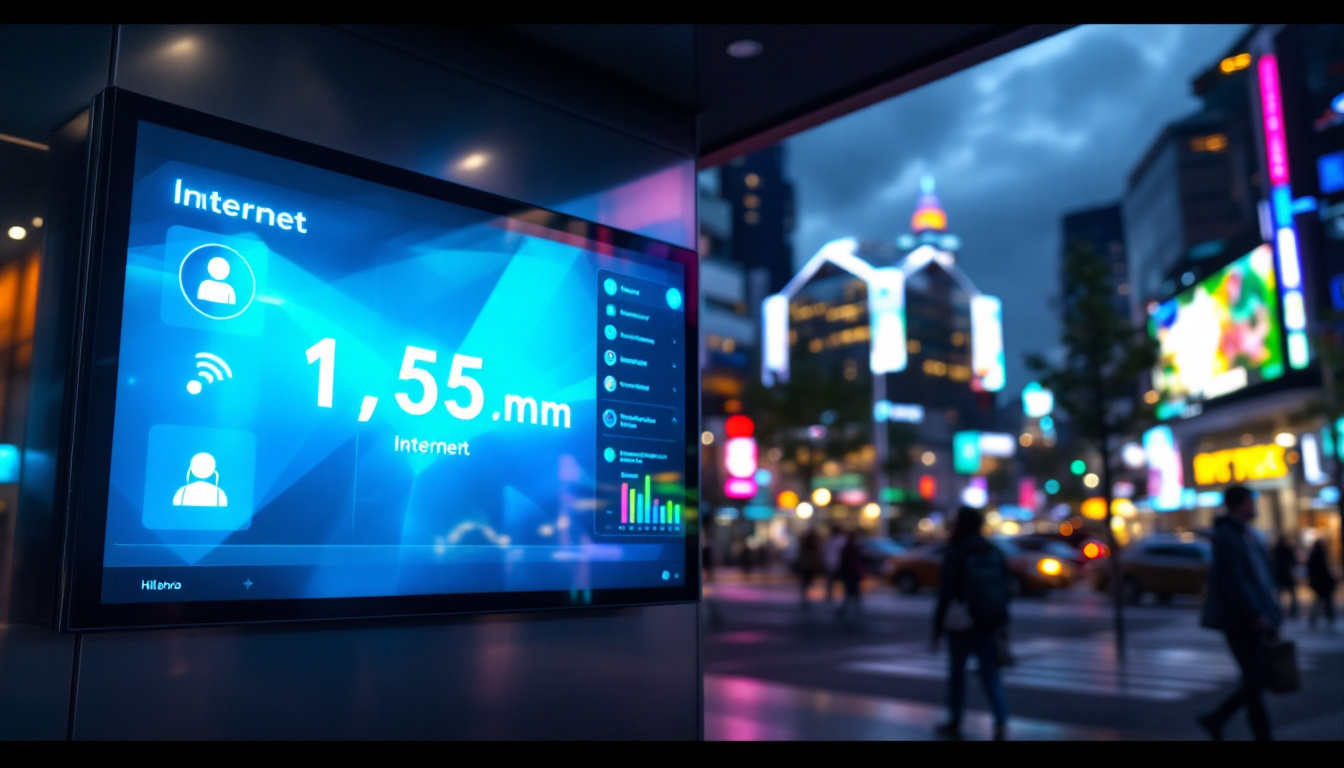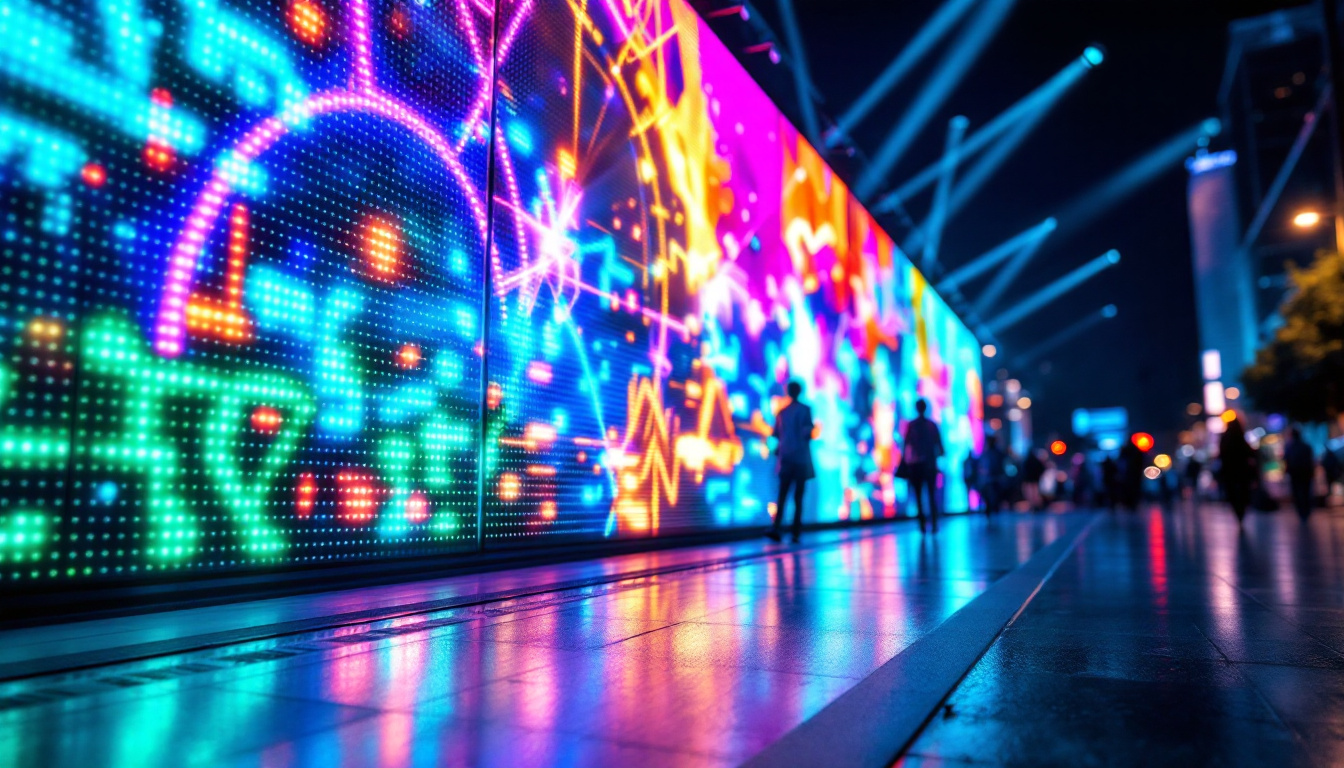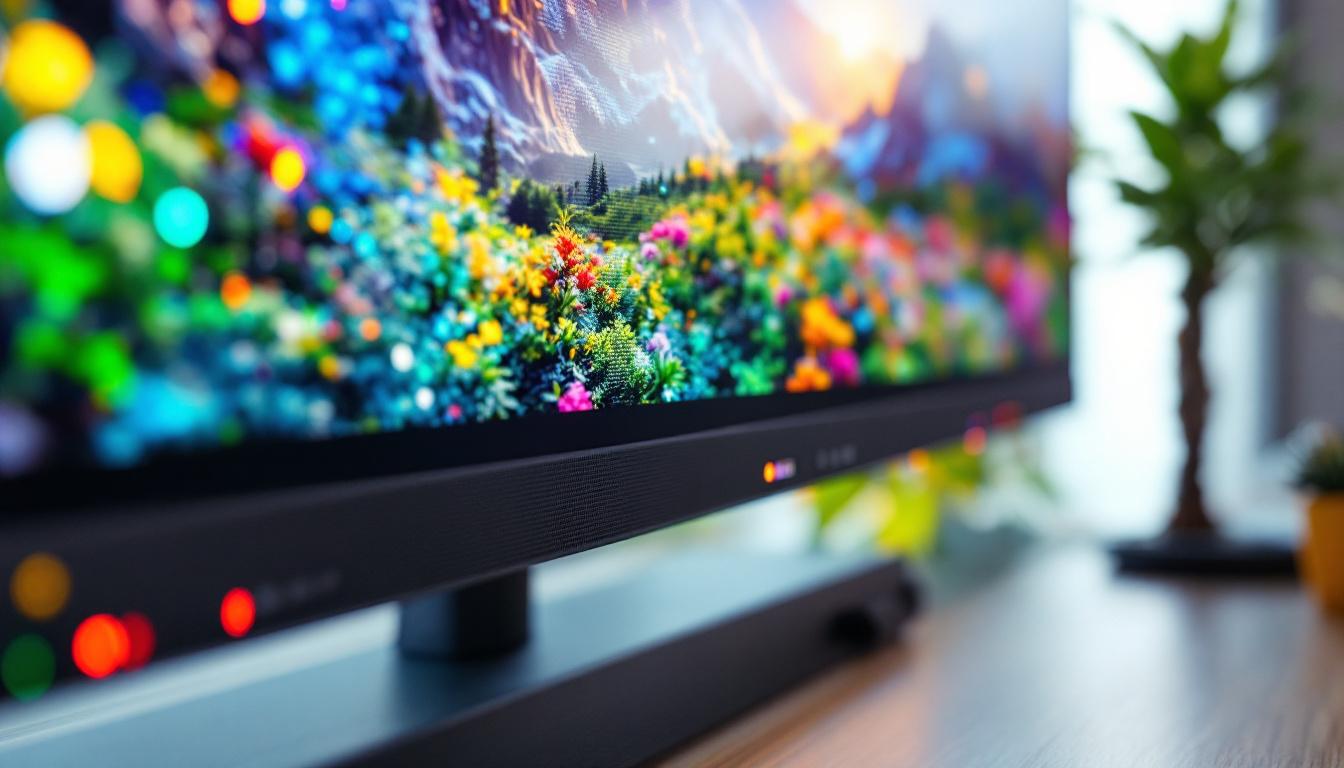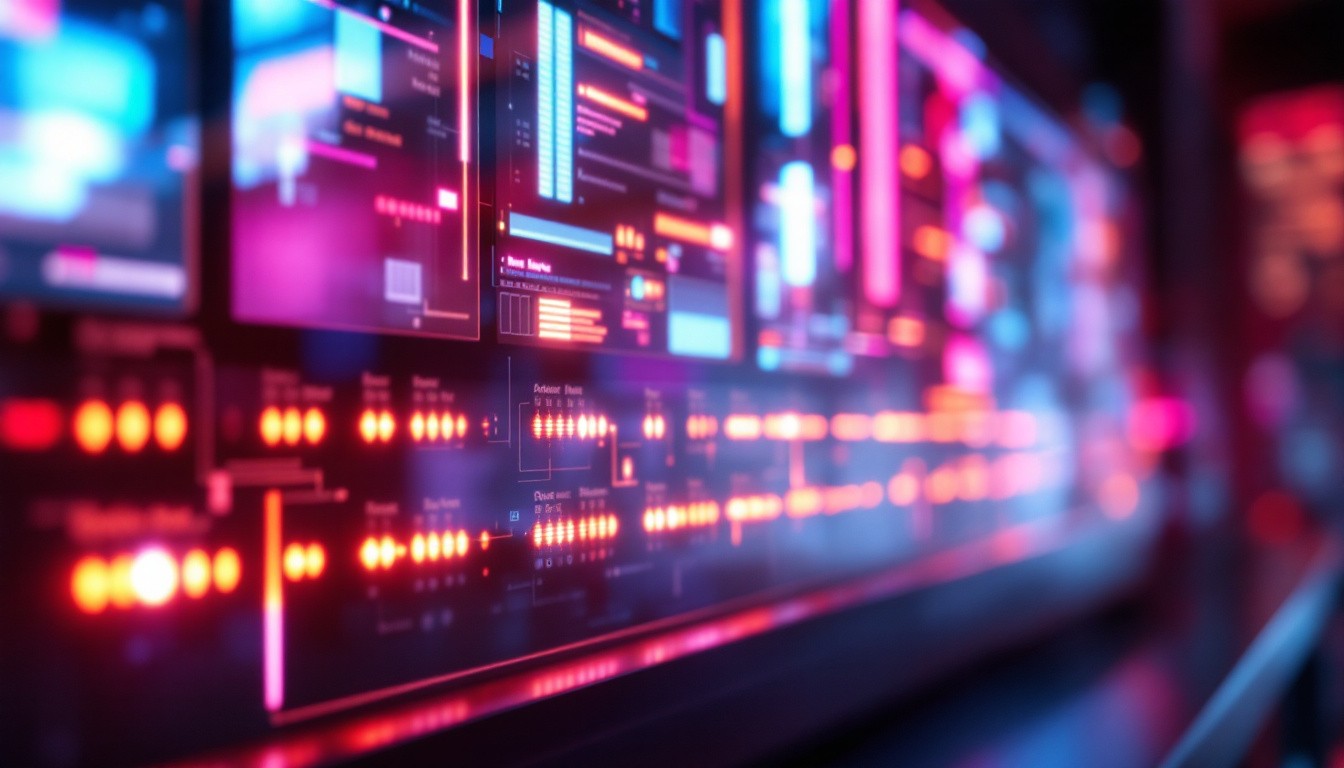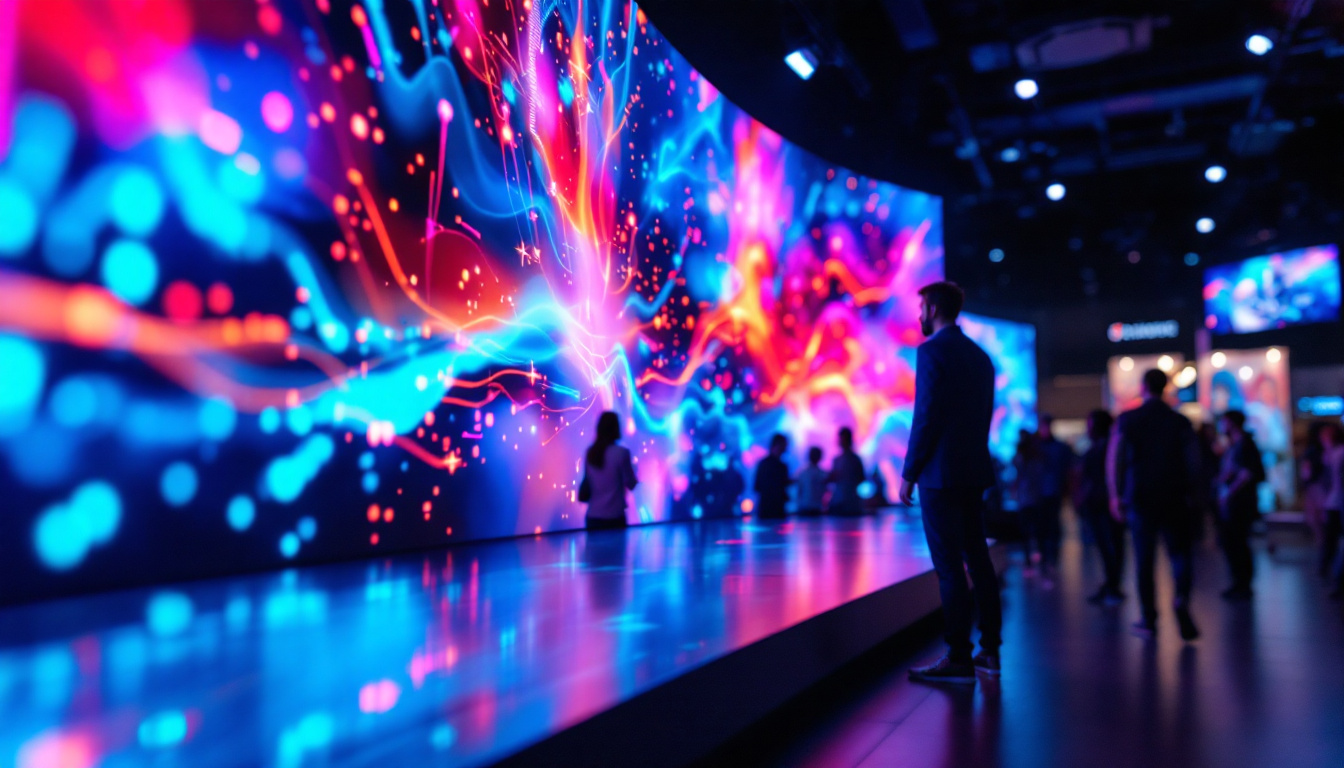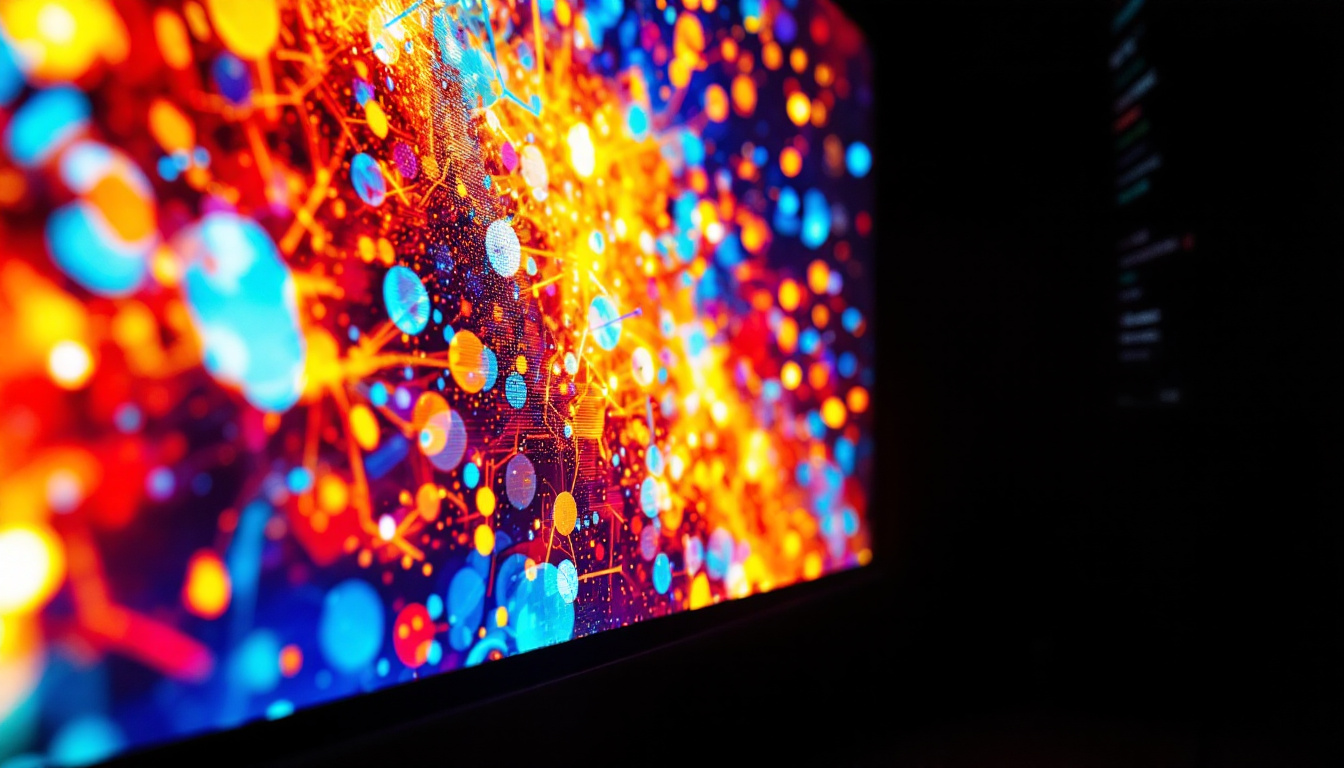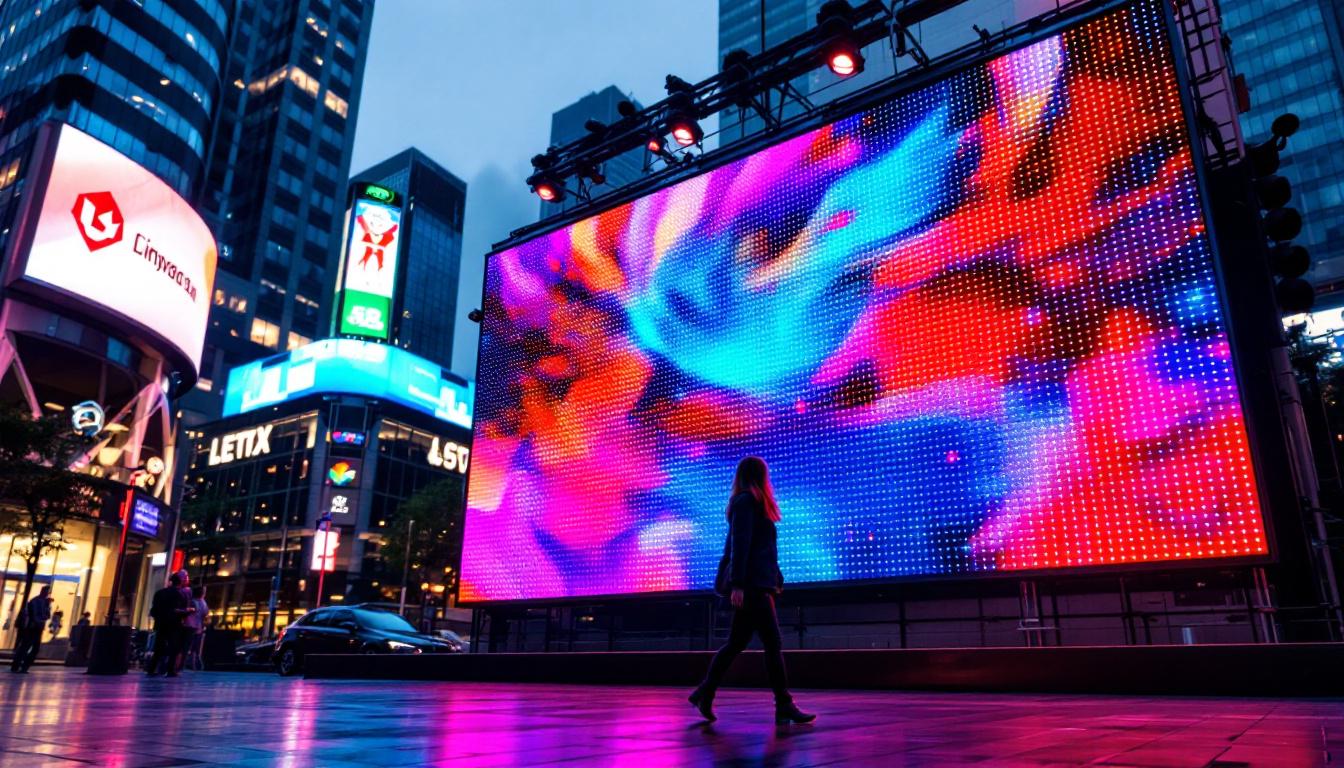Projection TV Screen: LED Display Explained
In the world of home entertainment, the evolution of display technology has significantly transformed how viewers experience their favorite movies, shows, and games. Among the various types of display technologies available today, LED (Light Emitting Diode) displays have gained immense popularity, particularly in projection TV screens. This article delves into the intricacies of LED display technology, its advantages, and its application in projection TV screens.
Understanding LED Technology
LED technology is a form of solid-state lighting that utilizes semiconductor diodes to emit light. Unlike traditional incandescent bulbs that rely on filaments, LEDs produce light through electroluminescence. This fundamental difference contributes to the numerous benefits that LED displays offer, especially in the realm of projection televisions.
How LED Displays Work
At the core of LED display technology is the arrangement of tiny diodes that emit light when an electric current passes through them. In the context of projection TVs, these diodes can be configured in various ways to create images. The most common configuration includes RGB (Red, Green, Blue) diodes, which combine to produce a broad spectrum of colors.
When an image is projected onto a screen, the LED display controls the intensity of each diode, thereby creating the desired colors and brightness levels. This precise control allows for vibrant images with excellent contrast ratios, making LED displays particularly appealing for home theaters and gaming setups.
Types of LED Displays
LED displays can be categorized into two primary types: direct-lit and edge-lit. Direct-lit LED displays feature an array of LEDs positioned directly behind the screen, providing uniform brightness and better contrast. On the other hand, edge-lit displays have LEDs positioned along the edges of the screen, which can lead to thinner designs but may sacrifice some uniformity in brightness.
Additionally, there are variations such as OLED (Organic LED) and QLED (Quantum Dot LED) displays, each offering unique advantages. OLED displays are known for their deep blacks and wide viewing angles, while QLED displays excel in color accuracy and brightness. Understanding these differences is crucial when selecting the right projection TV screen for specific needs.
Advantages of LED Projection TV Screens
LED projection TV screens offer numerous advantages that make them a preferred choice for many consumers. From energy efficiency to superior image quality, these displays have reshaped the landscape of home entertainment.
Energy Efficiency
One of the most significant benefits of LED technology is its energy efficiency. LEDs consume considerably less power than traditional projection technologies, such as incandescent or halogen lamps. This reduced energy consumption not only lowers electricity bills but also contributes to a smaller carbon footprint, making LED displays an environmentally friendly option.
Furthermore, the longevity of LED bulbs is another factor to consider. With a lifespan that can exceed 25,000 hours, users can enjoy their projection TV screens for years without the need for frequent replacements, further enhancing the cost-effectiveness of LED technology.
Image Quality
When it comes to image quality, LED projection screens stand out for their ability to produce vibrant colors and sharp images. The use of RGB diodes allows for a wide color gamut, enabling the display to reproduce colors with remarkable accuracy. This is particularly important for movie enthusiasts and gamers who seek an immersive viewing experience.
Moreover, LED displays typically offer higher contrast ratios compared to traditional projection technologies. This means that dark scenes appear deeper, while bright scenes remain vivid, enhancing the overall viewing experience. The combination of brightness and contrast ensures that images remain clear and engaging, even in well-lit environments.
Versatility and Size Options
Another notable advantage of LED projection TV screens is their versatility. These displays come in various sizes, making them suitable for a wide range of spaces, from small living rooms to expansive home theaters. Additionally, many LED projection systems are designed to be portable, allowing users to set up their screens in different locations as needed.
This flexibility extends to the types of content that can be displayed. Whether streaming movies, playing video games, or showcasing presentations, LED projection TVs can handle diverse media formats, making them a valuable addition to any entertainment setup.
Considerations When Choosing an LED Projection TV Screen
While LED projection TV screens offer numerous benefits, several factors should be considered when selecting the right model. Understanding these considerations can help consumers make informed decisions that align with their viewing preferences and requirements.
Screen Size and Resolution
The size of the screen is a critical factor that can significantly impact the viewing experience. Larger screens provide a more immersive experience, but they also require adequate space for installation. Additionally, the resolution of the display plays a vital role in image clarity. Common resolutions include Full HD (1920×1080), 4K (3840×2160), and even 8K (7680×4320) options.
For those who prioritize detail and clarity, opting for a higher resolution is advisable, especially for larger screens. However, it is essential to balance screen size and resolution to ensure that the viewing distance is appropriate for the chosen setup.
Brightness and Ambient Light
Brightness is another crucial consideration, particularly for projection TV screens. The brightness level is measured in lumens, and a higher lumen rating indicates a brighter image. This is particularly important in rooms with significant ambient light, where a brighter display can help maintain image quality.
For dedicated home theaters with controlled lighting, lower-lumen displays may suffice. However, for multipurpose rooms or spaces with windows, investing in a brighter LED projection TV screen is advisable to ensure optimal viewing conditions.
Connectivity Options
In today’s digital age, connectivity options are essential for any projection TV screen. Ensuring that the chosen model has a variety of ports, such as HDMI, USB, and audio outputs, can enhance the overall experience. Additionally, many modern LED projection screens come equipped with smart features, allowing users to stream content directly from the internet.
Compatibility with various devices, including gaming consoles, Blu-ray players, and streaming devices, is also crucial. A well-connected projection TV screen can serve as the central hub for all entertainment needs, simplifying the user experience.
Installation and Setup
Once the ideal LED projection TV screen has been selected, the next step is installation and setup. Proper installation is vital to ensure optimal performance and longevity of the display.
Choosing the Right Location
Finding the right location for the projection TV screen is essential. Factors such as viewing distance, room layout, and ambient light should be considered. Ideally, the screen should be positioned at eye level when seated, and there should be sufficient distance between the screen and seating area to avoid eye strain.
Additionally, minimizing ambient light can enhance the viewing experience. Consider using blackout curtains or shades to control light levels in the room, particularly during daytime viewing.
Mounting Options
LED projection TV screens can be mounted in various ways, including wall mounting, ceiling mounting, or using a portable stand. Wall mounting is a popular choice for creating a clean and streamlined look, while ceiling mounting can save floor space in smaller rooms.
Portable stands offer flexibility, allowing users to move the screen as needed. Regardless of the mounting option chosen, ensuring that the screen is securely installed is crucial for safety and performance.
Calibrating the Display
After installation, calibrating the display settings can significantly enhance the viewing experience. Adjusting brightness, contrast, color balance, and sharpness can help achieve the best possible image quality. Many LED projection TV screens come with preset modes for different types of content, such as movies or sports, making it easier to optimize settings for specific viewing preferences.
For those who are particularly detail-oriented, using calibration tools or professional services can ensure that the display is set up to its full potential, providing an unparalleled viewing experience.
Future of LED Projection TV Screens
The future of LED projection TV screens looks promising, with ongoing advancements in technology and design. As consumer demands evolve, manufacturers are continually innovating to enhance the performance, efficiency, and versatility of LED displays.
Emerging Technologies
One of the most exciting developments in the realm of LED projection technology is the integration of artificial intelligence (AI) and machine learning. These technologies can optimize image quality in real-time, adjusting settings based on content type and ambient conditions. This level of adaptability promises to enhance the viewing experience significantly.
Additionally, advancements in miniaturization are leading to the development of ultra-thin and lightweight LED projection screens. These innovations allow for even greater flexibility in installation and portability, catering to the needs of modern consumers.
Sustainability Initiatives
As environmental concerns continue to rise, manufacturers are increasingly focusing on sustainability in their production processes. This includes using eco-friendly materials, reducing energy consumption, and implementing recycling programs for old displays. Consumers can expect to see more environmentally conscious options in the LED projection TV market, aligning with the growing demand for sustainable products.
Enhanced User Experience
The user experience is set to improve with the integration of smart features and enhanced connectivity options. As more devices become interconnected, the ability to control and customize settings from smartphones or tablets will become standard. This seamless integration will make it easier for users to enjoy their favorite content without the hassle of complicated setups.
Conclusion
LED projection TV screens have revolutionized the way viewers experience entertainment at home. With their energy efficiency, superior image quality, and versatility, these displays are well-suited for a variety of applications. By considering factors such as screen size, brightness, and connectivity options, consumers can make informed decisions that enhance their viewing experiences.
As technology continues to advance, the future of LED projection TV screens promises to be even more exciting, with innovations that prioritize user experience and sustainability. Whether for gaming, movie nights, or presentations, LED projection screens offer a captivating way to enjoy visual content in any setting.
Discover the Future of Visual Entertainment with LumenMatrix
Ready to elevate your home entertainment experience with the latest in LED display technology? LumenMatrix is at the forefront of innovation, offering a wide range of LED display solutions that bring your favorite content to life. From immersive Indoor LED Wall Displays to dynamic Outdoor LED Wall Displays, and from versatile Vehicle LED Displays to sleek LED Poster Displays, our products are designed to captivate and engage. Explore our LED Sports Displays for the ultimate game-day experience, or transform your space with our Floor LED Displays and Custom LED Display options. Embrace the future with our All-in-One LED Display solutions and see-through LED Transparent Displays. Experience the revolution in visual communication and make a lasting impact with LumenMatrix. Check out LumenMatrix LED Display Solutions today and step into a world of unparalleled clarity and vibrancy.

